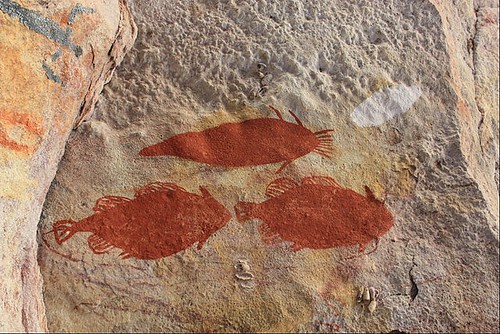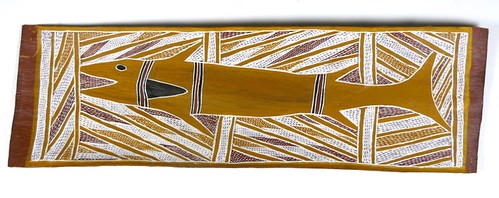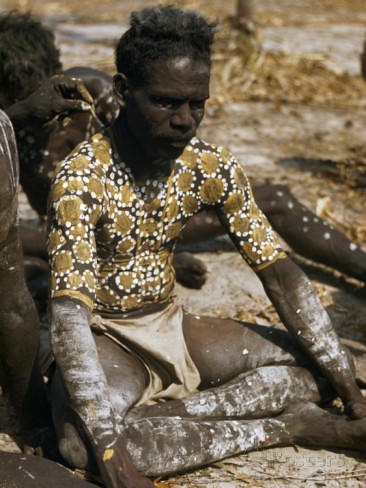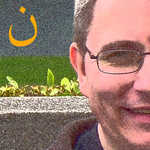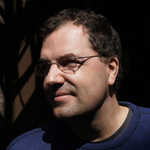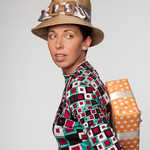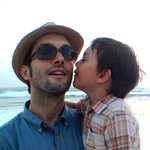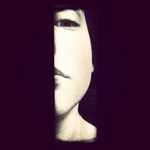All along the Australian Surf Coast, one can find a series of Aboriginal Ochre Mines in the high cliffs that stretch between Torquay and Aireys Inlet. The colors range from bright yellow and deep gold through an extensive range of heart warmingly earthy tones all the way into orange, purple, pink and deep reds. We saw all these colors today, as we walked along the Cliff Top Walk at Aireys Inlet: rusty gossans of the Potassium and Iron bearing mineral Jarosite, highly valued by Aboriginal cultures for use as a pigment. If you click on the above picture you can see (in the bottom third of the image) how layers of the Jarosite outcropping have been removed by stone tools in a natural erosion gulley perched high above the rock platform with its tidal pools and under-water reef.
The oldest such ochre sources in this country were first mined at least thirty thousand years ago. Here are some examples of how ochre paintings have been used in aboriginal cultures over the millennia.
Ochre on Canvas, Rainmaker Wandjina by Lily Mindindil Karadada, 2006
Ochre on Rock, Griffiths University, Artist Unknown
Ochre on Bark, National Museum of Australia, Artist Unknown
Ochre on Aboriginal Dancer
If you would like to see pictures of the landscape, flora and fauna along the 35 k Surf Coast Walk from Jan Juc to Aireys Inlet, click here. Oh, and maybe I should mention that my house is situated directly on the Surf Coast Walk about 31 K from the start in Jan Juc and 3 K before you get to the Split Point Lighthouse in Aireys.
Filed Under
Other moments in Aireys Inlet
-
Burning, poem, Books
Burning the Books
in Aireys Inlet, Australia -
Today's Sunrise, poem
Beginning or End?
in Aireys Inlet, Australia -
Verses for Emlyn, Grandfathers, family fun
Grandad Wade
in Aireys Inlet, Australia -
Verses for Emlyn, Roses, flowers
Beauty
in Aireys Inlet, Australia -
The Small Things, Depression
Small blessings #4: Just a touch of rose.
in Aireys Inlet, Australia -
Verses for Emlyn, birds, bird bath
Seven
in Aireys Inlet, Australia -
Atheism, Today's Sunrise
Glory
in Aireys Inlet, Australia -
Today's Sunrise, Today's Coffee, health
Morning Cuppa
in Aireys Inlet, Australia -
Verses for Emlyn, kangaroo, wildlife
Alert
in Aireys Inlet, Australia



